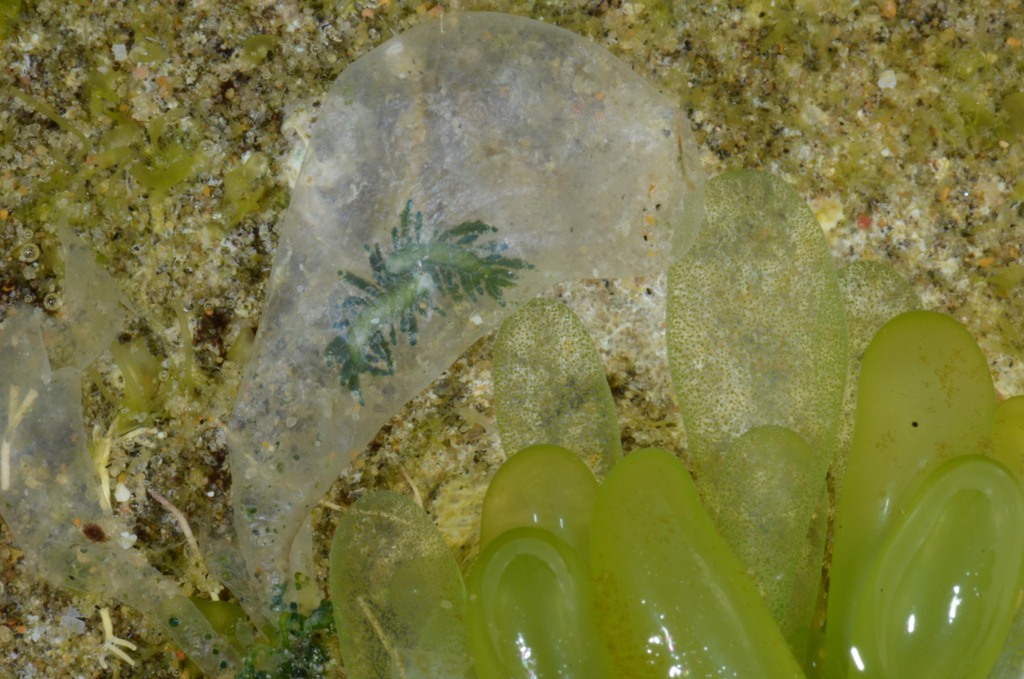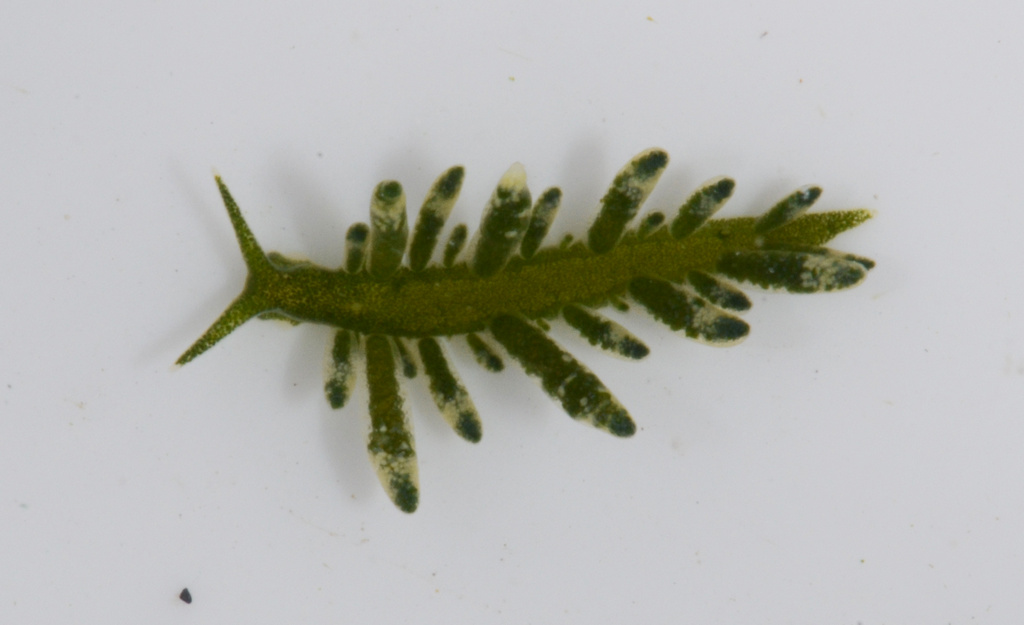You may already be confused with the title, but you did read it well! Animals can do photosynthesis and most incredibly some species are more efficient than plants or algae. Yet, this achievement is not for all; you must be special, you must be unique…, you must be a sapsucking slug!
This is a process named kleptoplasty (= chloroplast symbiosis; see Door #2 of this calendar series) where the slug while feeding from the plant tissue does not digest the chloroplasts but instead migrate these organelles to specific parts of the body where they remain active producing sugars that become available to the slug.
There are two species of sapsucking slugs with a remarkable life-history. The spectacular and rare tropical species Ercolania endophytophaga and E. kencolesi both only known from Australia do not retain chloroplasts as other species do, but they do feed on algae, however, only on a very special kind – the green grape-algae of the Order Siphonocladales. These are syncytial algae made of massive single cell grape-shaped structures which the animal pierce to move in and leave inside until “green-matter” is available.
I was very fortunate to find one of this slugs back in January 2014 in southern Mozambique. Usually one has to collect a large quantity of algae to carefully search through later on in the lab and hope for the best! However, in that afternoon while sampling in a beautiful shallow tidal tropical reef in Paindane sluggishly looking at a facies of a “grape-alga” growing over a boulder I suddenly notice a tiny animal moving gently inside the algae. I grabbed a few bunches of algae into my sampling jar to look at later on…, and voilà… I was rewarded with a few specimens of one of this spectacular and difficult slugs most probably an undescribed species, the first from the Indian Ocean.
-Manuel



